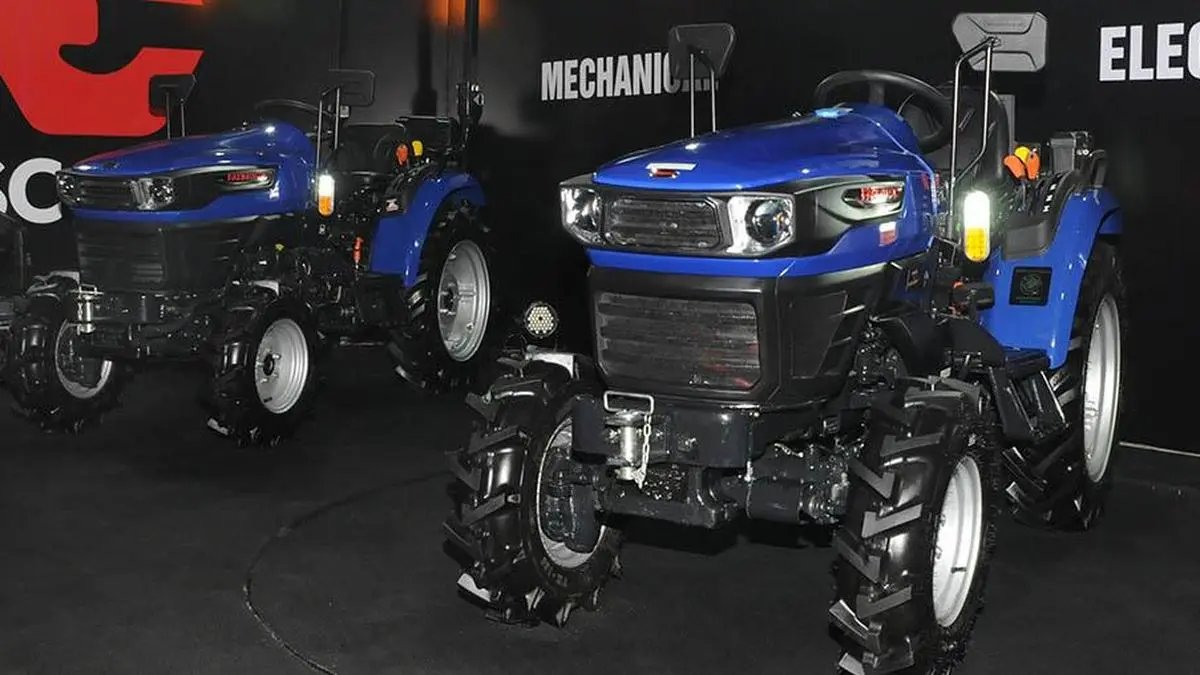Farming without fumes: Why electric tractors are the future of Indian agriculture

India’s agricultural landscape is undergoing a quiet revolution. Once dominated by the chugging of diesel engines and the smell of exhaust, farmlands across the country are slowly embracing a cleaner, quieter, and more efficient alternative—the electric tractor. As India strives to achieve its climate commitments and reduce rural dependence on fossil fuels, the rise of electric tractors represents not just a technological shift, but a socio-economic transformation rooted in sustainability, savings, and self-reliance.
The changing dynamics of Indian agriculture
Agriculture continues to be the backbone of India’s economy, employing nearly half of the workforce and contributing around 18% to the national GDP. Yet, the sector has long been burdened by rising fuel prices, erratic rainfall, and shrinking profit margins. Diesel, which powers most traditional tractors, accounts for a significant portion of farm expenses. For small and marginal farmers, these costs can determine whether a season ends in profit or loss.
Against this backdrop, electric tractors emerge as a pragmatic solution—offering reduced operating costs, minimal maintenance, and zero tailpipe emissions. As electricity and renewable energy become increasingly accessible in rural India, these machines promise to revolutionise farming in a way that’s both economically and environmentally sustainable.
Why electric tractors make economic sense
The first and most compelling argument for electric tractors lies in their economics. On average, the cost of running an electric tractor is just 20–25 per cent of that of a diesel-powered one. While the upfront price of an EV tractor may currently be higher, the lifetime cost of ownership is significantly lower.
Electric tractors eliminate the need for diesel, frequent oil changes, and complex mechanical servicing. They operate on fewer moving parts, reducing breakdowns and repair downtime. For farmers, this translates into consistent operational efficiency and long-term savings. Moreover, with the government’s increasing focus on rural electrification and solar energy adoption, the possibility of charging tractors using renewable power adds another layer of cost advantage and sustainability.
Environmental gains: Clean power for a green future
The environmental benefits of electric tractors cannot be overstated. India’s agriculture sector is a major contributor to greenhouse gas emissions—both directly and indirectly. Diesel-powered farm machinery emits large quantities of CO₂, NOx, and particulate matter, all of which harm not only the environment but also farmers’ health.
Electric tractors offer an alternative that eliminates tailpipe emissions altogether. This aligns perfectly with India’s vision of achieving net-zero emissions by 2070. By transitioning to electric
machinery, Indian agriculture can significantly reduce its carbon footprint while improving air quality in rural areas. Cleaner farms mean healthier farmers, healthier soil, and a healthier planet.
Empowering farmers through technology
Electric tractors are more than just eco-friendly machines; they’re intelligent tools. Most new-generation electric tractors come equipped with smart features such as GPS-based tracking, data analytics for productivity monitoring, and even remote operation capabilities. This infusion of technology empowers farmers to make informed decisions about soil health, water usage, and crop management.
Furthermore, many electric tractor models are designed with modular battery systems, allowing farmers to swap batteries quickly and minimize downtime during crucial farming seasons. Such innovations reflect how technology can blend seamlessly with traditional agricultural practices to create a more efficient and informed ecosystem.
The role of policy and infrastructure
For electric tractors to reach their full potential, policy support and infrastructure development are essential. The Indian government’s FAME (Faster Adoption and Manufacturing of Hybrid and Electric Vehicles) initiative, though primarily focused on urban mobility, can serve as a foundation for agricultural EV incentives.
States such as Maharashtra, Uttar Pradesh, and Punjab are already exploring pilot programs to integrate EV tractors into their rural economies. With dedicated subsidies, financing options, and the establishment of rural charging networks—particularly solar-based ones—India could make electric farming mainstream by the end of this decade.
Public-private collaborations will also play a crucial role. Startups and established manufacturers alike are investing in R&D to produce electric tractors suited to Indian terrains and small landholdings. As costs fall and awareness rises, adoption will accelerate naturally.
Challenges and the road ahead
Despite its promise, the electric tractor revolution faces challenges. Battery cost, charging infrastructure, and farmers’ initial hesitation to adopt new technology remain key barriers. However, these are transitional hurdles—ones that history has shown can be overcome with time, awareness, and accessibility.
As technology advances, battery efficiency and range are improving rapidly, while localized solar charging stations offer a way to overcome rural energy limitations. Pilot projects across India have demonstrated the reliability and performance of electric tractors even in demanding conditions, proving that this transition is not only feasible but inevitable.
A future rooted in sustainability
“Farming without fumes” isn’t just a slogan—it’s a vision of progress where productivity coexists with planetary responsibility. Electric tractors embody the promise of cleaner energy, reduced costs, and empowered farmers. They symbolize a shift from dependency to independence, from pollution to preservation.
By adopting electric tractors, India has the opportunity to lead the world in sustainable agriculture—one that respects its roots while embracing innovation. The fields of tomorrow will hum not with diesel engines, but with the quiet energy of change—powering a future where growth, technology, and nature thrive together in harmony.
The author is Founder & CEO, Autonxt Automation
Published on October 26, 2025



